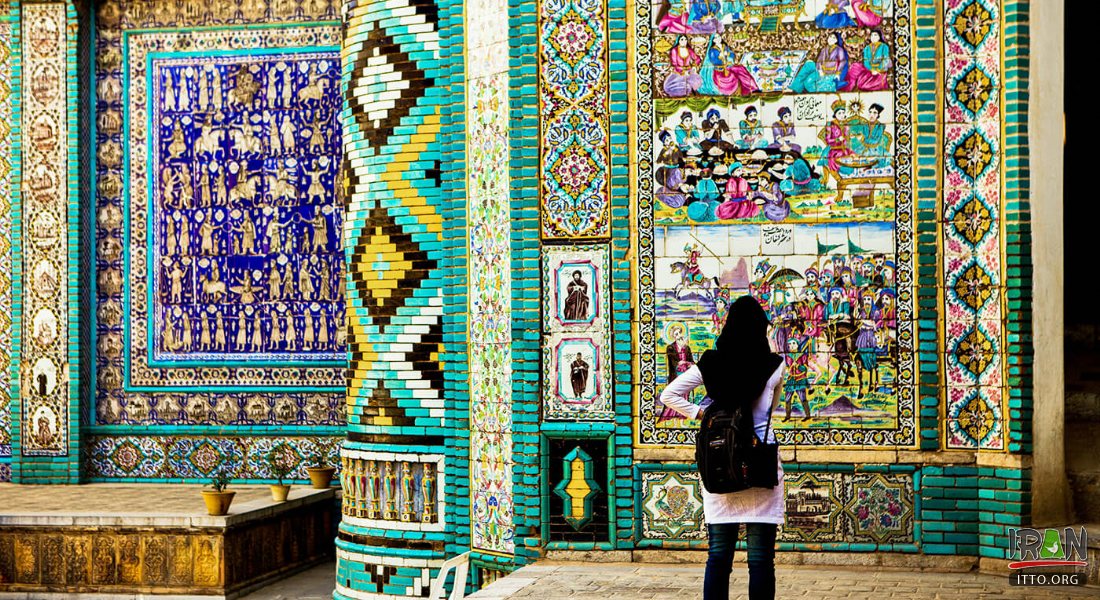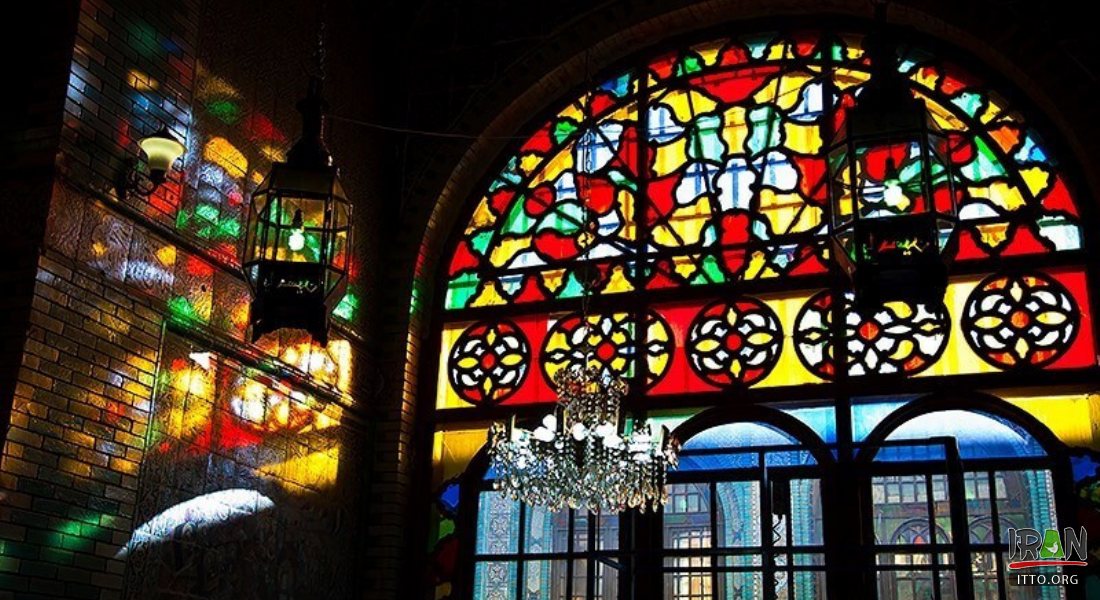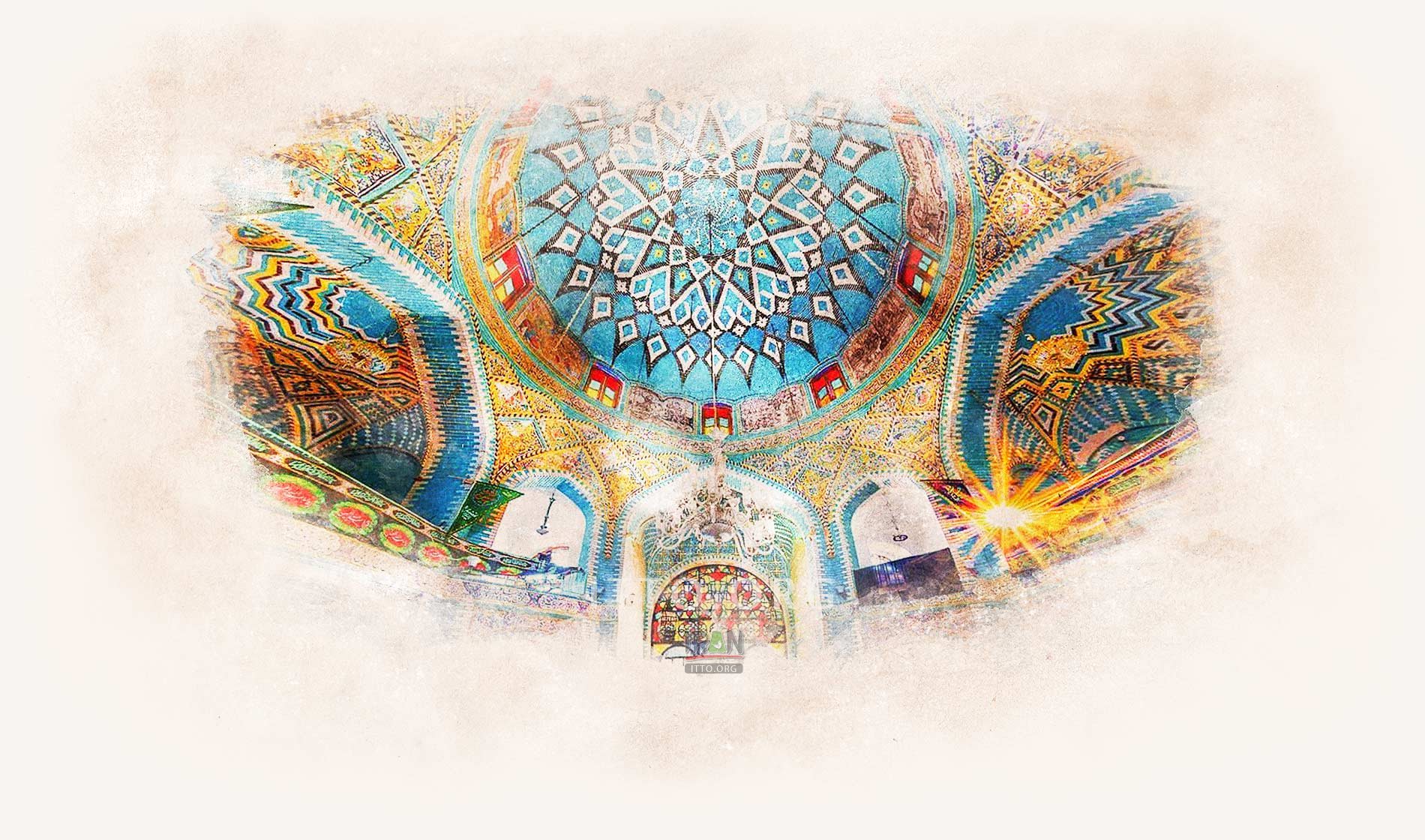Tekiye Moaven Almolk and Hossainieh of Moavenol Molk comprises of 3 buildings such as the Abbasieh, Hossaineh and Zeinabieh, located in the city center of Kermanshah.
The Tekieh has 2 courtyards and a building in the center. The Hossainieh walls are covered and adorned with beautiful multi colored tiles. Portraits of great personalities of the times have been painted by delicate paint brushes and attractive colors on the tiles. The subject of some of these tile works are related to the historical and mythological episodes besides religious traditions such as: Hazrat Soleiman, the Karbala and Ashoura events, and tales of Rostam and Sohrab.

It has three main parts: Hussainiya, Zaeynabiya and Abbasiya. Museum of Anthropology of Kermanshah, and Clothes and Jewelry Museum of Kermanshah are located in Abbasiya.
To build this Tekyeh, experts and artisans had to stay and live in Kermanshah for a while. The drawings were done by Abulghasem Mani Kermanshahi, the tiles were made by Hasan Kashi Paz Tehrani, and the architect was Ostad (Master) Muhammad or as his nickname was "Ostad Siah" (The Black Master). The signatures and the names of masters who worked in this Tekyeh can be seen on the tiles. A tile furnace was built there as well to make the job of the tilework masters more convenient.
According to the documentation on the walls, the tiling project of this Tekyeh began in around 1941 and also in some parts we see the date 1958. Hence, it seems that it took seventeen years to finish the tilework of the entire Tekyeh.

The Tekieh (Tekyeh) is located in Kermanshah used for mourning processions and rituals held in the month that Imam Hossein died. It has halls of Abassieh and Zeinabieh, and a Mosque.
The pictures carved on the tiles include scenes from wars of Mohammad against infidels, Ali’s battles, Karbala events and pictures of ancient Iranian kings such as archemeneid kings and Persepolis are unique in their kind. The architecture of the building was turned over to first to Hossein, the painter from Tehran and Seyyed Abolghasem Mani by Hassan Khan Moaven al-Molk and later on Hossein, the glazed tile maker from Tehran was also invited to Kermanshah to reconstruct the monument.




